We're an affiliate
We hope you love the products we recommend! Just so you know, we may collect a share of sales or other compensation from the links on this page at no additional cost to you. Thank you if you use our links, we really appreciate it!
The Boxer has for a long time been one of the most popular dog breeds in America, and we understand why.
Sweet-faced, and muscular, these medium to large-sized dogs highlight what many families consider a true companion.
The distinctive square-shaped head, square jaws, and shiny coat give the Boxer a distinctive look that appeals to many dog enthusiasts.
With an athletic body stature and a sense of alertness, the Boxer is always ready to defend their human caregivers from impending danger.
Since there is a lot we can say about this breed, we’ve outlined everything you need to know in this Boxer dog breed info guide, including their origin, characteristics, care, and many more.
Brief History of the Boxer Dog Breed
The present-day Boxers are believed to originate from German hunting dogs known as Bullenbeisser in the late 19th century.
The German Bullenbeisser dogs were used in hunting large game such as bears, wild boars, dears, and bulls.
Georg Alt, a breeder from Munich, crossed a brindle Bullenbeisser named Flora with a local male dog of undocumented origin.
The litter has a fawn-and-white male puppy named Lechner’s Box, who is believed to start the lineage of the present-day Boxers.
The upcoming pups were crossed with English Bulldogs, Mastiffs, and some other small breeds to fine-tune the Boxer dog breed.
The Boxer dog breed continued the work of Bullenbeisser, and some people also used them for the now-outlawed bullbaiting bloody sport.
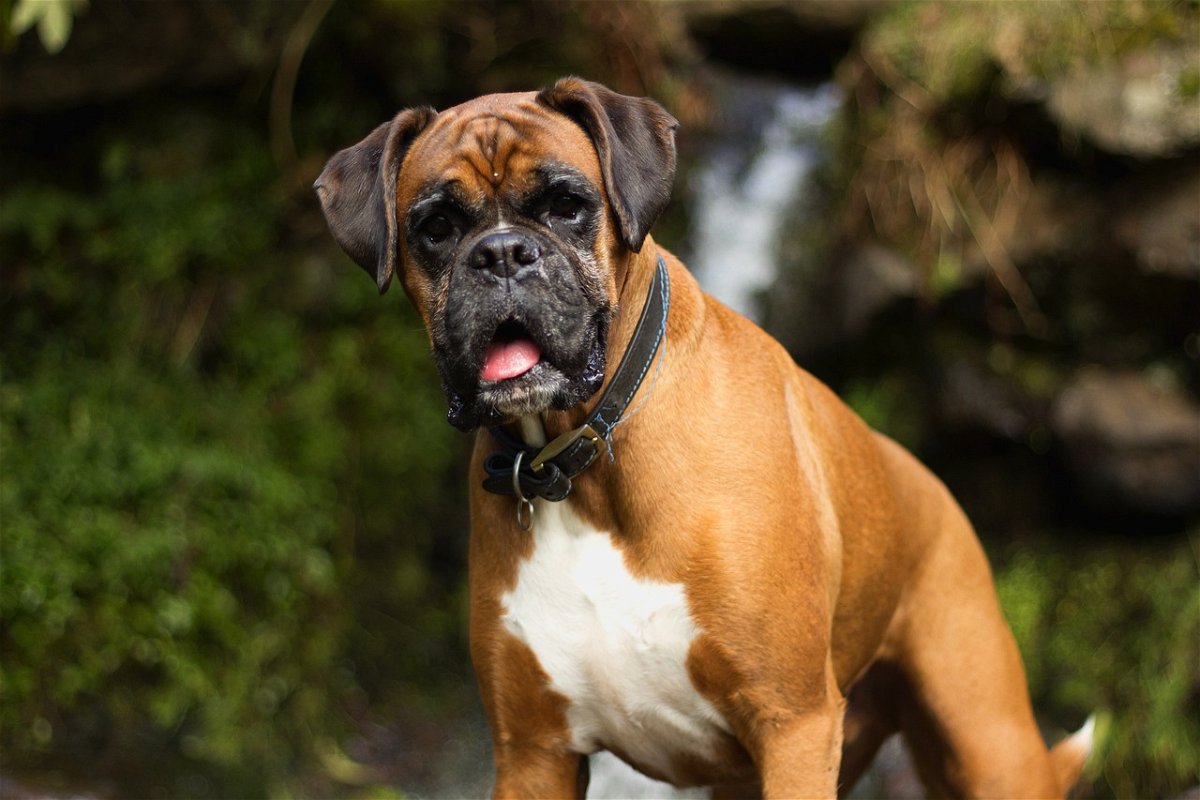
The Deutscher Boxer Club was the first official Boxer Club formed in Munich in the year 1895, after which other Boxer Clubs in Germany were formed.
In 1905, the many Boxer Clubs in Germany combined to form one huge club after the adoption of the official breed standards in 1902.
Boxers made their way into the United States as early as 1898, but they were inducted into the American Kennel Club in 1904.
The then New York Governor, Herbert G. Lehman, had a dog, who became the first recorded Boxer to finish the championship in the United States in the year 1915.
5 Fascinating Facts About Boxers
1. Boxers have very long Tongues
Boxers were selectively bred for their short snouts to excel in their historical hunting roles.
While their breeding program was taking place, the tongue emerged to be longer than the average size in most dogs.
A Boxer, named Brandy, was once a world record holder for the longest tongue in a dog – measuring 1 ft and 5 inches long.
2. Boxers are natural protectors
Boxers are loyal dogs to their family members, but they are always ready to ward off strangers and intruders.
This natural protective instinct makes them a superb choice for people looking for watchdogs and guard dogs for their family and property.
3. Boxers are affectionate
Despite their natural instincts to protect family and property, Boxers are known for their affectionate demeanor towards those they love.
These playful goofballs have been rightfully described as being ‘gentlemen’ among all dogs with short snouts.
A boxer dog is happy when spending quality time with their loyal human companions, and this includes children, both small and big.
4. Boxers are independent thinkers
Many dog trainers have described Boxers as having a mind of their own, so it is always good to practice patience when dealing with them.
These active canines are prone to get bored with too much repetition and they can quickly devise ways of creating their own entertainment.
5. Boxers love to wiggle
Nothing can express the affectionate personality of Boxers more than their tendency to make that signature butt wiggle.
When a Boxer sees a person they love, they are most likely to shake their entire body from side to side – an action that can melt your heart.
Boxer Puppies
When planning to adopt a Boxer puppy make sure to puppy-proof your home and get the necessary dog supplies ready.
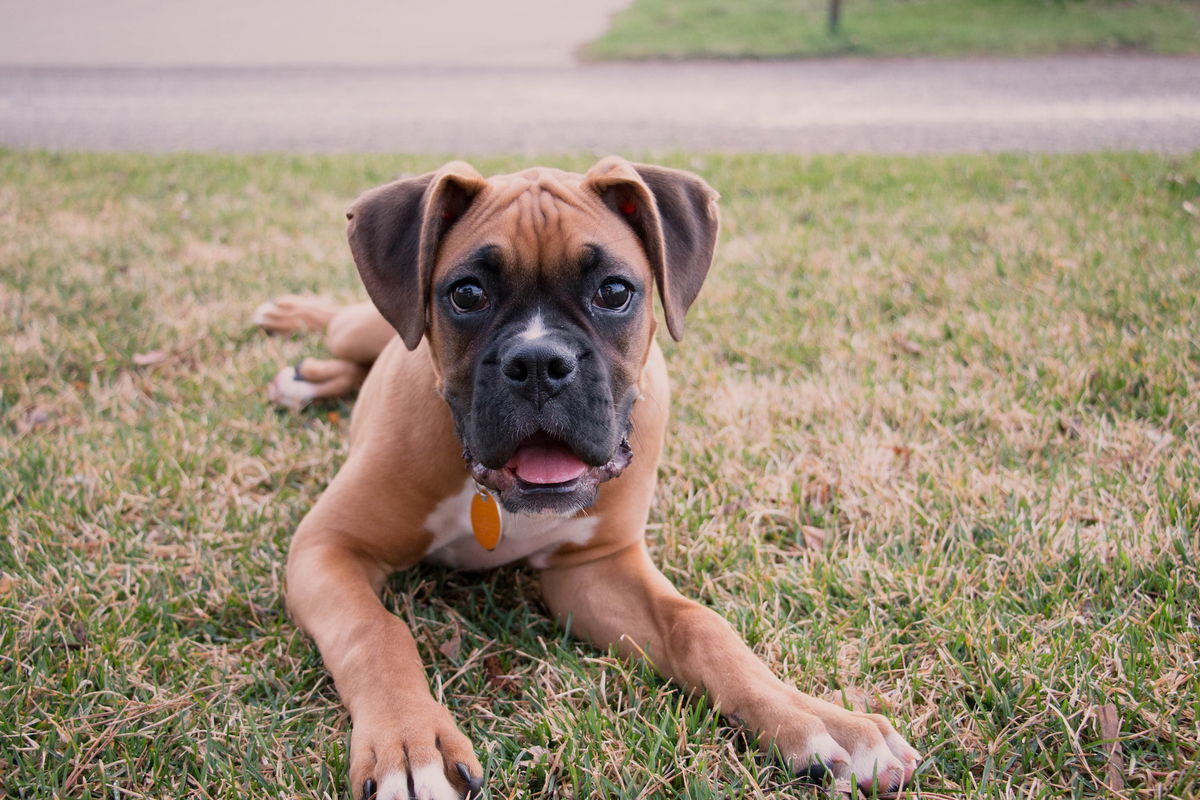
Keep in mind that Boxer puppies cannot tolerate excessive low or high temperatures, so you should always keep them indoors until they develop their coats fully.
On the same note, your Boxer puppy should not go outside until they receive their core vaccines in full. Exposing your young pup to an outdoor environment when young can expose them to harmful pathogens.
The 3 types of Boxer Dog Breed
1. The German Boxer
The German Boxer dog, also known as the European Boxer, are bred according to the standards of the German Kennel Club, known as the Verband für das Deutsche Hundewesen (VDH)
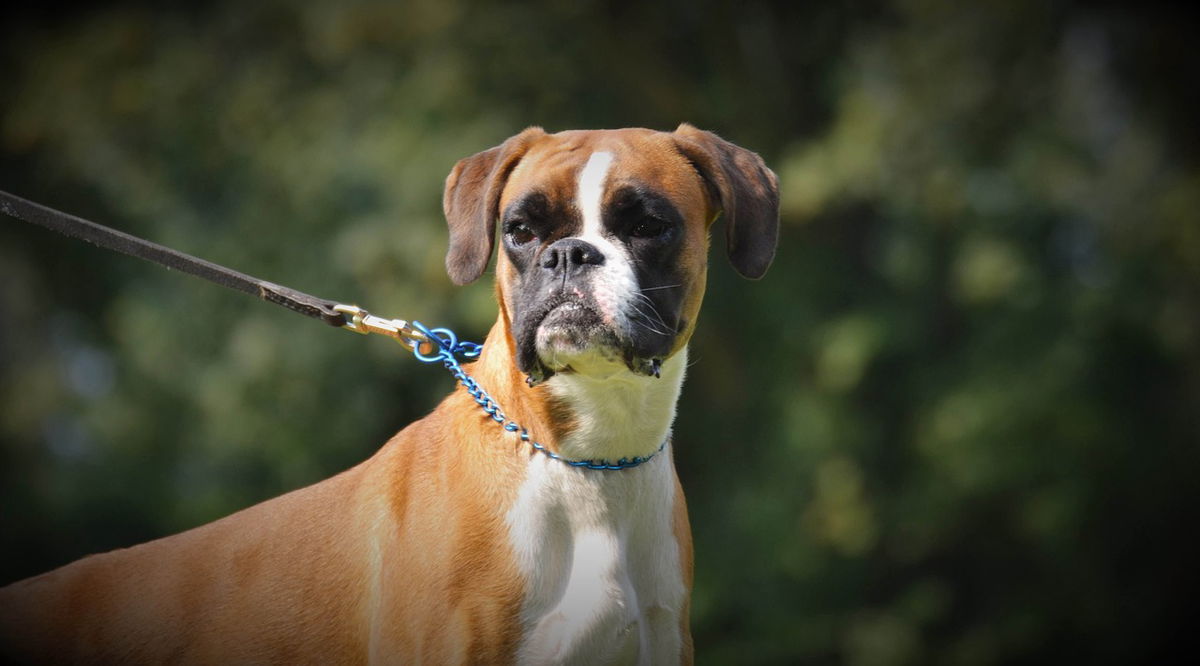
These German Boxers are large, stockier, robust, and more muscular than their UK and US–based counterparts.
Many people believe that the German Boxers are the true Boxer breed because of their links with Germany, but this is not the case since the other two types are also of this purebred.
2. The English Boxer
The United Kingdom, or English Boxers are the smallest among the other two counterparts. These short-haired canines are bred to meet the specifications of the United Kingdom Kennel Club.
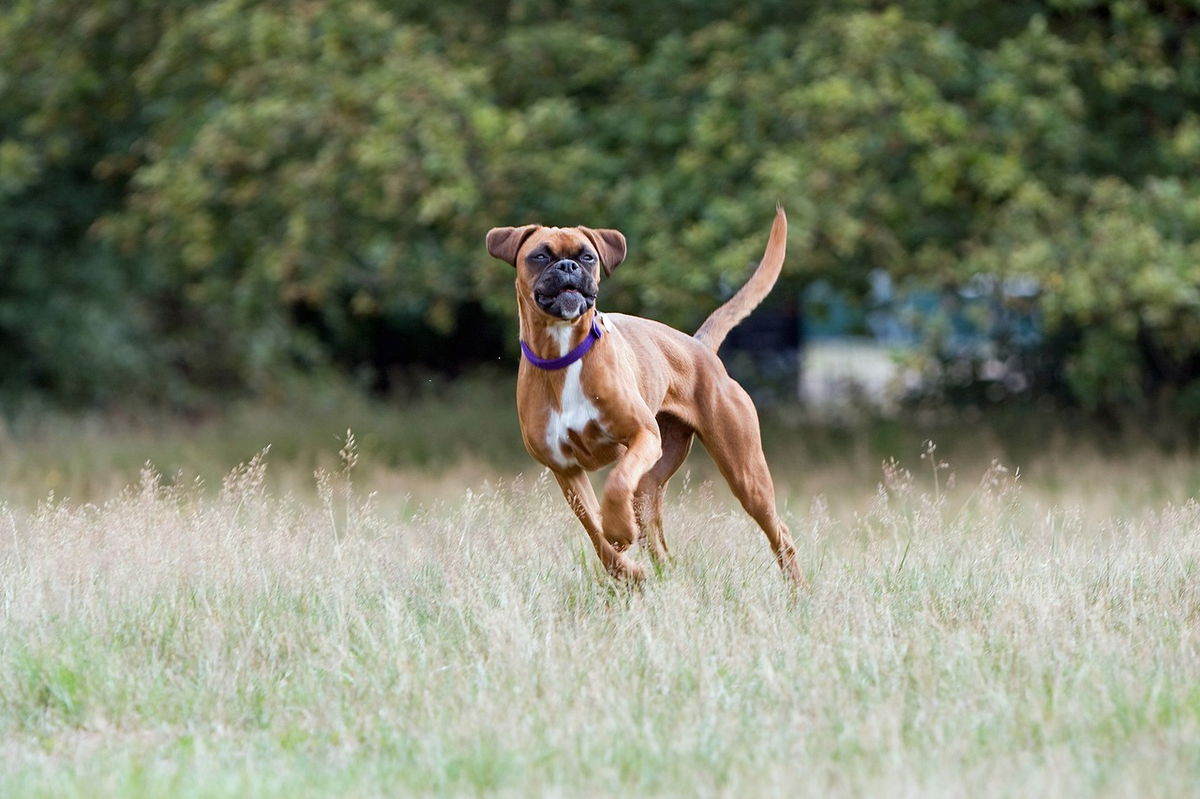
The KC standards are slightly different from those adopted by the AKC, which is why many people classify them as different dogs.
One of the major departing points between the two is the knuckle location and foot size. The body of an English Boxer is athletic, and thinner, with shorter legs and a snout to skull ratio of 1:3.
3. The American Boxer
The American Boxers are bred following the classification of standards outlined by the American Kennel Club.
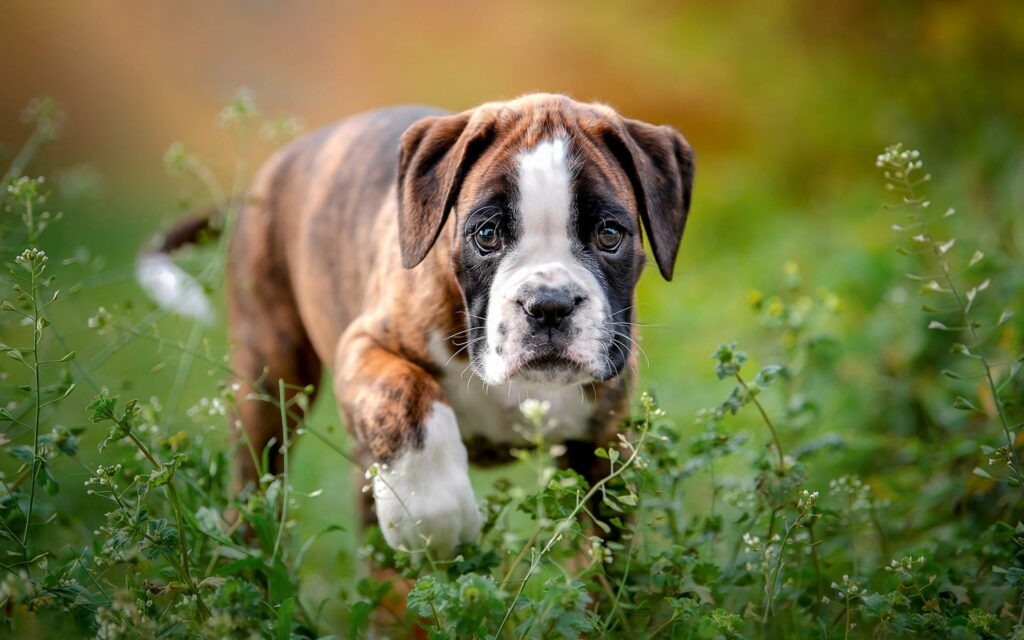
The most notable feature that separates the American Boxer from the other two is the lack of facial wrinkles. American Boxers also have a denser and brighter coat than the other two.
With a snout-to-skull ratio of 1:3, the American Boxers have a slightly wider snout than their counterparts from Germany.
Boxer Physical Characteristics
Size and Weight Range
A fully grown male Boxer dog can attain an average shoulder height of between 23 – 25 inches while their female counterparts have an average of 22 – 23.5 inches.
In terms of weight, an adult male Boxer tips the scale between 65 – 80 pounds while a corresponding female has an average weight of between 50 – 65 pounds.
Coat Color and Texture
Boxer dogs are short-coated, with a smooth layer of fur that lies tightly packed on their bodies. The official colors are fawn, brindle, and white with black markings or white mask.
Fawn Boxers can range from deep mahogany to light tan color while brindle ones may have a fawn background with back markings.
The white markings on Boxers should only cover a third or less of their entire sleek coat. Most Kennel Clubs discourage excessive white coloring because it predisposes the victim to skin cancer.
Boxers have a face with a black mask which can sometimes feature white markings (baze) between the eyes.
Boxers don’t have the genetic materials for a solid black color, so it’s not possible to spot a purebred black Boxer.
Heavily brindled Boxers may appear black, but this happens when the black stripes have completely sealed out the fawn color.
Distinctive features
One of the top highlights of a Boxer dog is their square-shaped muzzle with a strong jawline and a black mouth mask.
Their dark eyes carry a human expression that exudes both intelligence and alertness with a sense of humor to those they love.
Boxer dogs are widely renowned for their signature underbite which gives them an eye-catching ‘smile’.
Boxer Temperament and Personality
The personality and temperament of Boxer dogs is perhaps their most prized feature among dog enthusiasts and households.
The Boxers have been defined as being ‘hearing’ guard dogs – which means they can show high curiosity when listening and courageously guard what they love most.
These muscular dogs can defend their families and property only when they perceive potential threats from strangers.
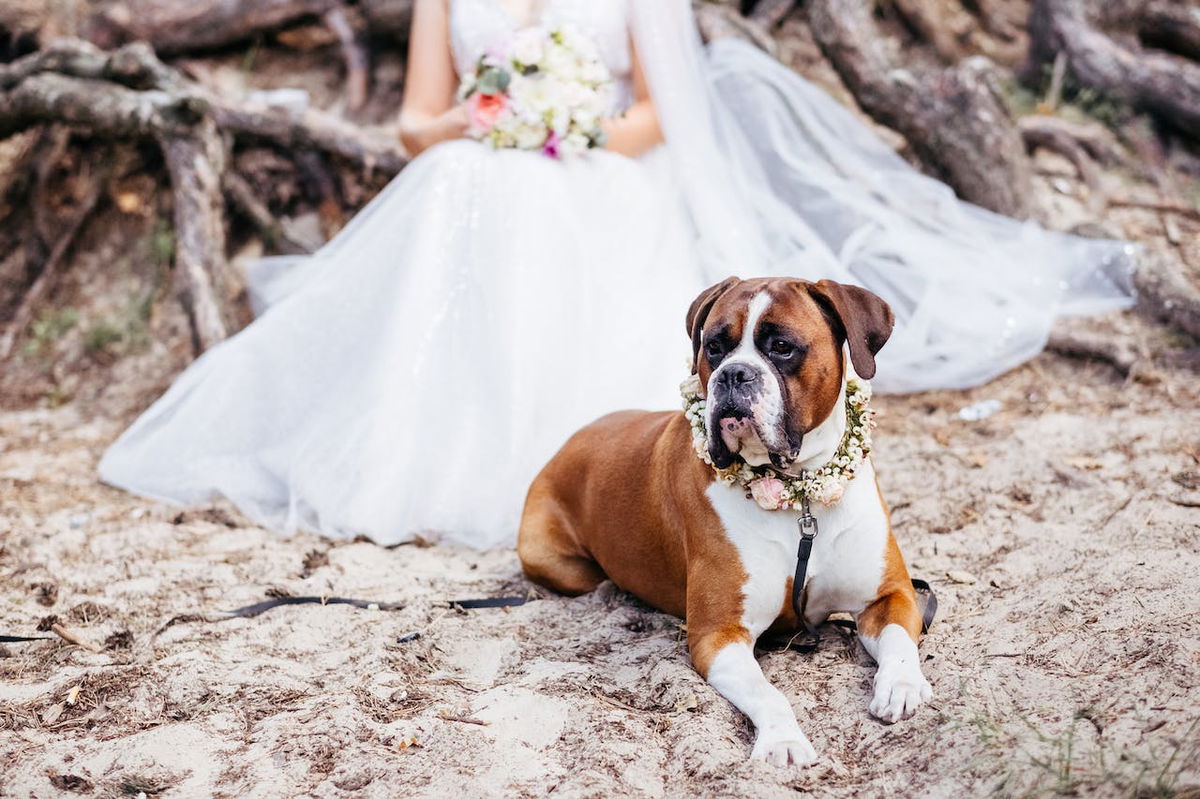
Boxers are particularly patient, social, and goofy with children, but remember to teach your kids how to interact with dogs properly.
Novice dog owners can do well with a Boxer provided they learn a few tricks on how to make them happy while being patient.
Boxer Intelligence
Boxers are smart dogs, thanks to their openness and willingness to learn new tricks. The impressive mental acumen of Boxers is seen in their problem-solving abilities.
According to the book ‘The Intelligence of Dogs‘ by Prof. Stanley Coren, Boxers were ranked at number 48 – classified as having average obedience and working intelligence.
Many canine trainers have however spoken highly of these dog’s brain power, respectfully disagreeing with the parameters used by Prof. Coren in his study.
Boxer Health and Lifespan
Average Lifespan
The average lifespan of most Boxer dogs is about 10 – 12 years, with some individuals living well past this range.
The life expectancy of Boxers, and indeed any dog breed, is affected by several factors including underlying health conditions and nutrition.
Providing good and balanced care to these fiercely loyal dogs can greatly improve their longevity and healthful living.
Common Health Issues and Genetic Disorders Affecting Boxers
Although Boxers are generally healthy dogs, there are certain medical conditions that you need to be wary about.
Certainly, not all Boxers will suffer these conditions, but it is good to have them in mind especially when you’re parenting this breed.
The following are some of the common health problems to watch out for:
- Boxer cardiomyopathy (BCM)
- Hip Dysplasia
- Hypothyroidism
- Demodectic Mange
- Gastric dilatation-volvulus (GDV)
- Deafness (prone to White Boxers)
- Aortic stenosis/sub-aortic stenosis (AS/SAS)
Preventive Measures for Good Health
Before adopting a Boxer, you need to know the kind of breeders you’re dealing with. We always recommend working with reputable breeders who prioritize the health and temperament of dogs.
Planning regular visits to the vet’s office for a physical and medical exam is a good preventive measure for Boxer’s health.
This will allow for the early detection of chronic conditions and the prescription of timely treatment to boost the recovery of your dog.
Preventive medication such as vaccines and heartworm medicine can greatly improve the health condition of your Boxer.
Providing your Boxer with enough nourishment forms the foundation for good health and better living. It’s also important to watch your dog’s weight by limiting calorie intake.
Boxers and Allergies
Boxers are moderate to light shedders, meaning they can be a great companion for allergy-prone individuals.
You’re less likely to come across strands of dead fur when you adopt this loyal dog breed. Boxers are also low-maintenance dogs, so you’ll be fine with moderate grooming practices.
People prone to allergies should watch out for other pet allergens including saliva and urine. Maintaining high hygiene practices can lower the chances of negative reactions from allergens.
Boxer Grooming Needs
Since Boxers have sleek, short coats, they have relatively lower grooming needs compared to other hairy dog breeds.
Weekly brushing with a curry comb is enough to remove debris or dirt from their sleek coat and distribute natural oils to keep the fur soft and shiny.
During seasonal changes, you can expect your Boxer to shed more than usual, so it’s important to brush them daily to maintain their good looks.
Boxers are fairly clean dogs, meaning they don’t require frequent baths. Occasional showers every couple of months are enough to rejuvenate their skin and restore their coat condition.
Many Boxers drool a lot, so you may need to spot-clean their mouth with a damp cloth frequently or when needed.
Monthly nail care is essential to keep your dog’s paws in top condition and prevent overgrown nails from causing injuries.
We recommend trimming your Boxer’s nails from their puppyhood years to make them acclimatized to the sound of Dremel tools.
Plan on daily dental care routine by brushing your dog’s teeth using a soft toothbrush and canine-specific toothpaste.
Don’t use human toothpaste to brush your dog’s teeth because they contain chemicals that can destroy their enamel.
It’s always prudent to check your dog’s ears and gently clean the internal part with a soft cotton ball dipped in an ear cleanser.
Boxer Exercise and Activity Level
Daily Activity Needs
Boxers are highly athletic dogs, known for their high energy and willingness to play. A healthy Boxer can thrive with consistent physical activities and mental exercise for about 2 hours per day.

The exact period that your individual dog needs will depend on several factors including underlying health conditions, age, and type of activity.
It’s always important to spread the exercise period into several sessions per day instead of working them out for a long continuous period.
Suitable activities and games for Boxers
Despite being athletic, a Boxer doesn’t need intensive exercise as you may imagine. Of course, they love physical exertion, but it doesn’t have to be very rigorous.
The following are some of the suitable games and mental exercises you can provide your Boxer to keep them trimmed and happy:
- Walking and Jogging
- Running
- Hiking
- Swimming
- Puzzle games
- Agility training
- Scent games
- Paying fetch
Importance of mental stimulation
Consistent brain games can help prevent boredom and free your lovely Boxer dog from anxiety-related disorders.
Engaging in interactive games can strengthen the bond and relationship you have with your canine friend.
Mental stimulating games are great in improving the decision-making skills of the participating dogs by making their minds sharper.
Engaging your adult Boxer in brain-taxing games can slow mental degradation and lower the risk of suffering dementia in old age.
Boxer Training and Socialization
Training and socializing your Boxer from a young age can make them better and well-mannered throughout their adult life.
A lack of proper training can cause your Boxer to become unruly and unpredictable in their behavior, especially toward strangers.
A trained Boxer walks in good posture and is more than willing to join their family often, going to places untaught dogs cannot go.
Properly trained dogs are rarely rude, and they often make reliable recalls, which is good especially when in outdoor environments.
Boxers are prone to jump on people, a leftover behavior from their ancestors who were taught to jump on prey to make a good catch.
However, with consistent behavior training, you can curb this behavior and make your Boxer a predictable breed when meeting new people.
When a properly trained Boxer meets people in the park, they are likely to greet them by going low and waiting to be stroked, rather than jumping.
Enrolling your Boxer in a puppy class from a young age is prudent and will ensure they master these life skills into their adult life.
Boxer Living Conditions
Because of their athleticism and desire to play, many Boxers can do well in large houses with fenced backyards.

Surprisingly, a Boxer can also thrive in an apartment, provided they get enough chances for daily brisk walks and receive lots of human attention.
Keep in mind that Boxers do not tolerate extreme heat, so you should always take them out when the temperatures are bearable.
Boxer Diet and Nutrition
A high-quality, nutritious dog food with the right mix of all essential nutrients is crucial in keeping your Boxer healthy and happy.
Providing a consistent supply of clean drinking water is one of the best things you can do to support your Boxer’s healthful living.
For proper portion control, we recommend you seek qualified advice from your vet on the amount and type of dog food to give your Boxer.
Keep a close eye on your dog’s weight to prevent them from becoming overweight and obese. Since Boxers are prone to bloating, it is best to feed them from an elevated position to encourage slow-eating.
Boxer Pregnancy and litter size
The average gestation period of a Boxer is about 63 days, with an expected litter size of between 6 to 8 puppies.
In late May 2022, Victoria Jacobse was expecting 7 or maybe 10 puppies, but her Boxer, named Athena, birthed a total of 14 healthy puppies at a go.
It’s prudent to provide your pregnant Boxer with proper prenatal care by ensuring they get high-quality food and keeping them in a stress-free environment.
Conclusion
While other dog breeds have specialized talents, e.g. hunting, running, scenting, and trailing, the Boxer dog breed is a combination of many desirable canine virtues.
Boxers were originally bred to work and they developed a fierce loyalty to their human handlers and companions.
Even though they are lovers, these ‘gentle’ guard dogs are always ready to sound an alert on perceived danger and they are courageous enough to attack an intruder with a body slam.
One thing you need to take home from our Boxer dog breed info is that they need something to do. Failure to provide them with a useful job may cause them to become boisterous.
Laura is the founder of Furs'n'Paws. She is a also a pet writer and expert with more than 20 years of experience of working with dogs and cats. She developed a very strong love for animals at a young age. Her passion led her to establish a thriving pet sitting and dog walking business in Dubai. As an expert in pet training, behavior, and nutrition, Laura is committed to helping pet owners and pet lovers by offering high-quality information on a wide range of topics.


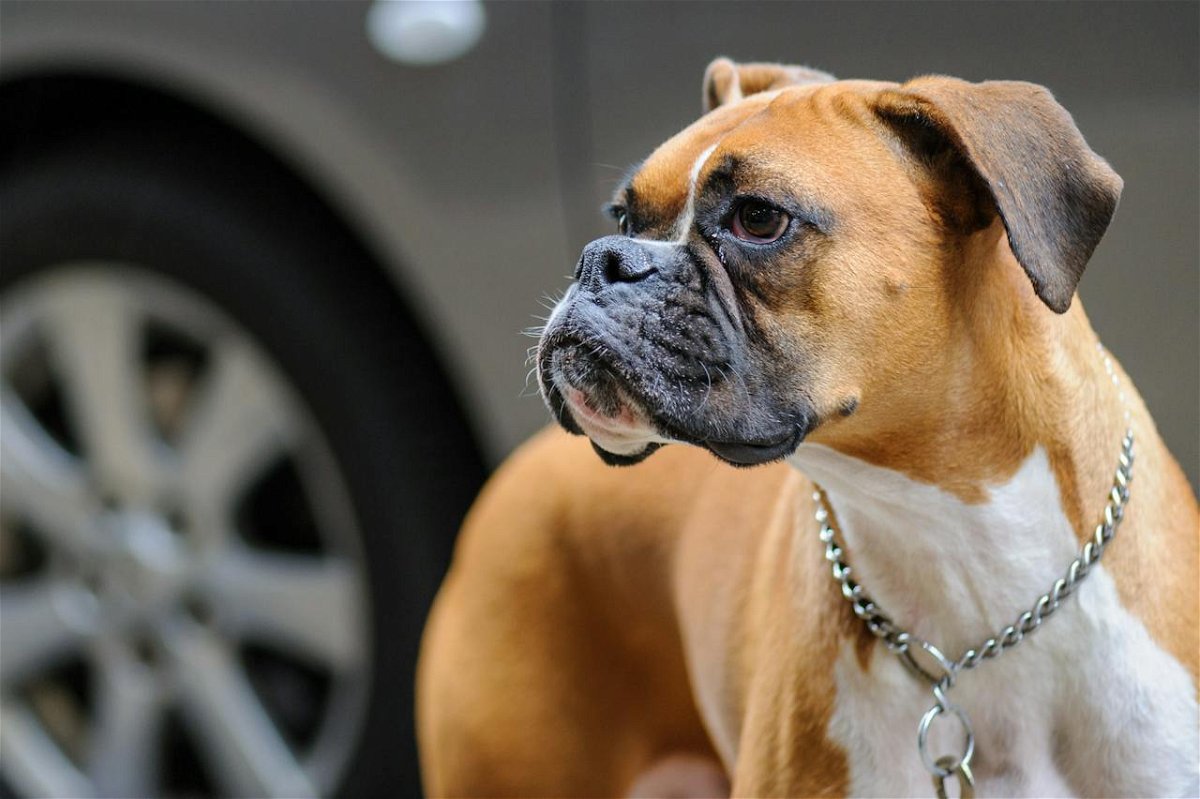
No responses yet